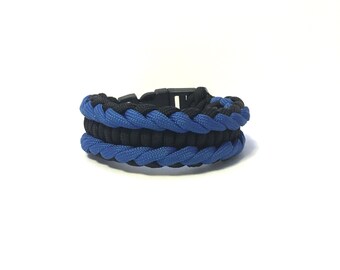

- #Falling hearts paracord how to#
- #Falling hearts paracord skin#
- #Falling hearts paracord professional#
For bone injuries, tie knots on the above and below joints. Tie a knot tight enough for a secure hold but not tight enough to limit blood flow.įor a joint injury, tie the knots above and below the injured joint. Wrap the cord around the injured limb, cushioning material, and your chosen hard object. Then lay out a hard object, such as a walking stick, to stabilize the injured limb. This soft material is primarily needed for cushioning. Layout some soft material ( jacket, shirt, or socks) under the limb you want to splint. Hopefully, it’s enough to find your way to safety and receive advanced medical attention, instead of being left immobile and in the harsh wilderness alone. Instead of giving up, use some paracord to splint the injury and control the pain. This raises the severity of your situation by exposing you to the risk of hypothermia, heat exhaustion, or dehydration. Pain from such injuries varies in degrees of severity, but the worst cases will leave you 100% immobilized.Īlthough not immediately life-threatening, a muscle, bone, or joint injury can hinder a rescue.
#Falling hearts paracord how to#
Here’s a video giving you the basics of suture instruction: ↓ How To Suture: Intro To Suturing Like A Surgeon ↓īesides open wounds and lacerations, you may run into muscle, bone, or joint injuries.

Continue this process beginning in the middle of each suture, working in halves.
#Falling hearts paracord skin#
Pull the thread until the edges of the skin are touching, not overlapping. Allow the two loops of thread on the hemostat to fall, making a knot. With the hemostat, grab the thread’s tail and pull it through itself. Take the suture thread with the needle and wrap it around the hemostat head twice. Pull the thread through the wound, leaving a small tail of thread out from the original entry position.

Readjust the hemostats and thread the needle from the inside of the wound to the opposite side of the wound from where you began. Use a good set of hemostats ( if you have them with your survival medical kit) and hold the threaded needle to maintain sterilization.Ībout half a centimeter from the wound opening, push the threaded needle head into the skin. Your first suture will begin in the middle of the wound. Now, thread a suture needle leaving a long tail of strand remaining. Now pull out a few of these strands the longer, the better. Pull the outer threads away from the paracord casing exposing the internal strands. The inner strands are both small enough and strong enough to close a wound in an emergency. Only use these sutures until you can make it to advanced medical care. Ideally, you packed a suture kit, but in extreme emergencies, you can use the inner threads as sutures. Often the only real option to decrease the risk of serious infection and massive blood loss is to stitch up the wound.
#Falling hearts paracord professional#
You become injured by something as small as falling on a dead branch or as extreme as an animal attack.īut when professional medical attention isn’t an option, you must get creative to survive.

Many injuries, like open wounds and severe lacerations, have no quick and easy solutions. Suturesīecoming severely wounded in the wilderness is as life-threatening as it gets ( especially if not quickly treated). Let’s cover the emergency uses first, as they are the most important to your survival. Are You Ready For The Tough Times Ahead? Take My 60 Sec Quiz To See If You’re Part Of 'The Fragile Masses’ Or Not… Start Quiz Now! Emergency Paracord Uses In this article, we will cover the 35 best survival paracord uses. Honestly, our lack of imagination limits the number of “actual” uses. When left intact, paracord has many important survival uses, and if you unweave the threads of the cord, the number of uses grows. However, today I will argue that paracord also belongs in this “many uses” category as well. Name one survival item with more uses than some high-quality survival paracord.ĭone? Well, I bet the first items that came to mind were a good survival knife, a survival hatchet, a multi-tool, or duct tape and you’d be right. SkilledSurvival’s Guide On How To Use Paracord For Survival Home / Survive / Random Assortment Of Survival Skills / 35 Best Paracord Uses For Survival & Preparedness By Andrea Gonzales | Last Updated: February 28, 2023


 0 kommentar(er)
0 kommentar(er)
